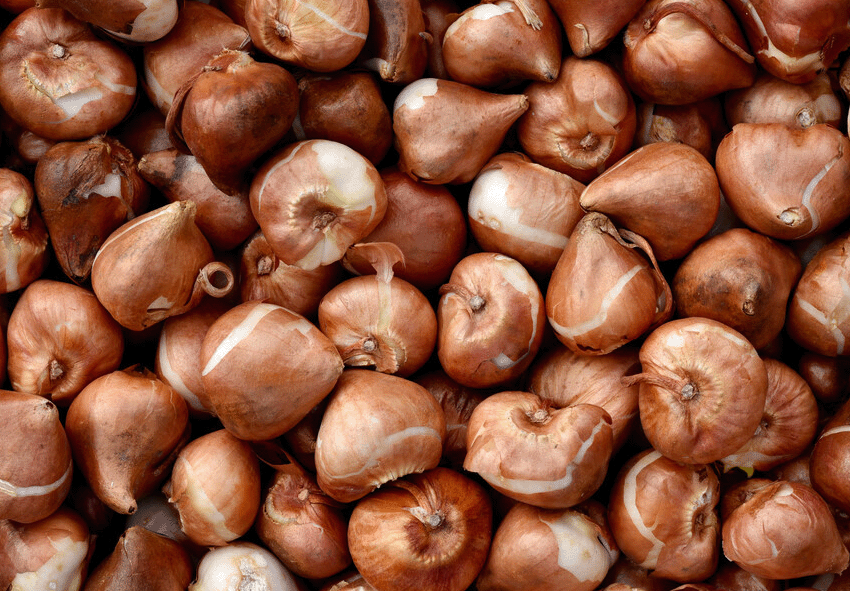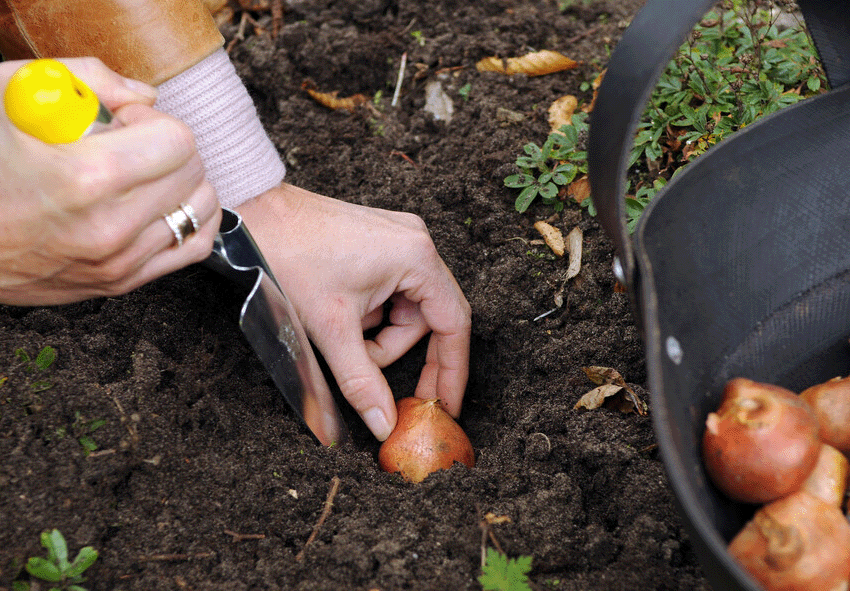Tulip bulbs are a favorite among gardeners and flower fans alike. Tulip bulbs are a wonderful option for adding a touch of elegance and brilliant colors to your home interior or landscape. These beautiful blooms have been treasured for ages, and their beauty continues to fascinate fans all over the globe. In this post, we will dig into the complexities of tulip bulb dormancy and development cycle, give vital insights on the optimal date for planting, provide recommendations on soil preparation, and walk you through correct tulip bulb planting practices. In addition, we will discuss typical problems and provide troubleshooting advice to guarantee a good tulip blooming season.
Understanding Tulip Bulb Dormancy and Growth Cycle:

Tulip bulbs have a unique growth cycle that involves periods of dormancy and active growth. Understanding this cycle is crucial for achieving optimal results when planting tulip bulbs. During the dormant phase, tulip bulbs store energy and prepare for the subsequent growing season. It is essential to allow the bulbs to undergo this dormant period before planting. This period typically occurs in late autumn or early winter, depending on your geographical location. By respecting the natural growth cycle, you encourage the bulbs to thrive and produce beautiful blooms.
Ideal Timing for Planting Tulip Bulbs:
When it comes to planting tulip bulbs, timing is everything. Generally, the ideal time for planting tulip bulbs is in the fall, before the ground freezes. This allows the bulbs to establish their root system before winter sets in. However, it’s crucial to consider your specific climate and the recommendations for your region. In some areas, planting tulip bulbs in late summer may be more suitable. To determine the best time for planting in your location, consult with local gardening resources or seek advice from experienced gardeners in your area. Remember, proper timing is key to ensuring a magnificent display of tulips in the spring.
Preparing the Soil for Tulip Bulbs:
To create the perfect environment for your tulip bulbs to flourish, proper soil preparation is essential. Tulips prefer well-drained soil with a slightly acidic to neutral pH level. Begin by clearing the planting area of any debris, weeds, or rocks. Loosen the soil to a depth of around 12 inches, incorporating organic matter such as compost or well-rotted manure. This enriches the soil, improves drainage, and enhances nutrient availability. Ensuring adequate drainage is crucial to prevent bulb rot. Remember, healthy soil sets the foundation for vibrant tulip blooms.
Proper Techniques for Planting Tulip Bulbs:

When it’s time to plant your tulip bulbs, follow these steps to maximize their growth potential. Start by digging a hole that is two to three times the height of the bulb. The depth should be approximately six to eight inches, allowing ample space for root development. Place the bulb in the hole with the pointed end facing upwards, as this is where the leaves and flowers will emerge. Ensure that the bulbs are spaced appropriately, usually four to six inches apart, to avoid overcrowding. After placing the bulbs, cover them with soil and gently firm the ground to eliminate air pockets. Water thoroughly to promote initial root growth and provide much-needed moisture.
Dealing with Common Challenges and Troubleshooting:
While tulip bulbs are generally easy to grow, certain challenges may arise along the way. One common issue is bulb rot, which occurs due to excessive moisture or poor drainage. To prevent this, ensure that the planting area has proper drainage and avoid overwatering. Pests, such as squirrels and voles, may also pose a threat to your tulip bulbs. Consider using deterrents or protective measures to keep these critters at bay. Additionally, monitor your tulips for signs of disease, such as fungal infections or viral disorders. Promptly remove and discard any affected plants to prevent the spread of disease to healthy bulbs.
Frequently Asked Questions (FAQs) about tulip bulbs
1. When is the best time to plant tulip bulbs for spring blooms?
The ideal time to plant tulip bulbs for stunning spring blooms is in the fall, usually between late September and early November. This allows the bulbs to establish strong root systems before winter sets in and provides the necessary chilling period for the tulips to bloom beautifully in the spring.
2. Can I plant tulip bulbs in the spring for the same effect?
Planting tulip bulbs in the spring is not recommended if you want robust spring blooms. Tulip bulbs require a period of cold dormancy during the winter months to trigger flowering. Planting them in the spring may result in weaker or no blooms the following year.
3. How deep should I plant tulip bulbs?
Tulip bulbs should be planted at a depth of about 6 to 8 inches (15 to 20 centimeters). This depth helps protect them from extreme temperature fluctuations and ensures they receive the right amount of insulation during the winter.
4. What type of soil is best for tulip bulbs?
Tulip bulbs thrive in well-draining soil with good fertility. A sandy loam or loamy soil is ideal. Make sure the planting site is not prone to waterlogging to prevent bulb rot.
5. Can I order Netherlands tulip bulbs from your online store?
Yes, you can order tulip bulbs from our online store. We offer a wide variety of tulip bulb selections, including different colors and varieties. Ordering from our store allows you to conveniently purchase and plant tulip bulbs at the right time for stunning spring blooms. We ensure the quality of our bulbs so you can enjoy beautiful tulip displays in your garden.
Published: 22.05.2023
